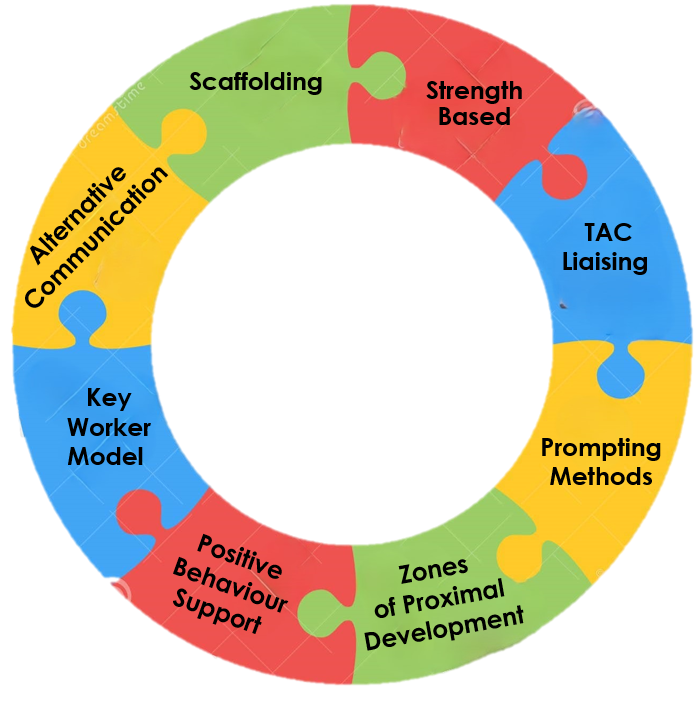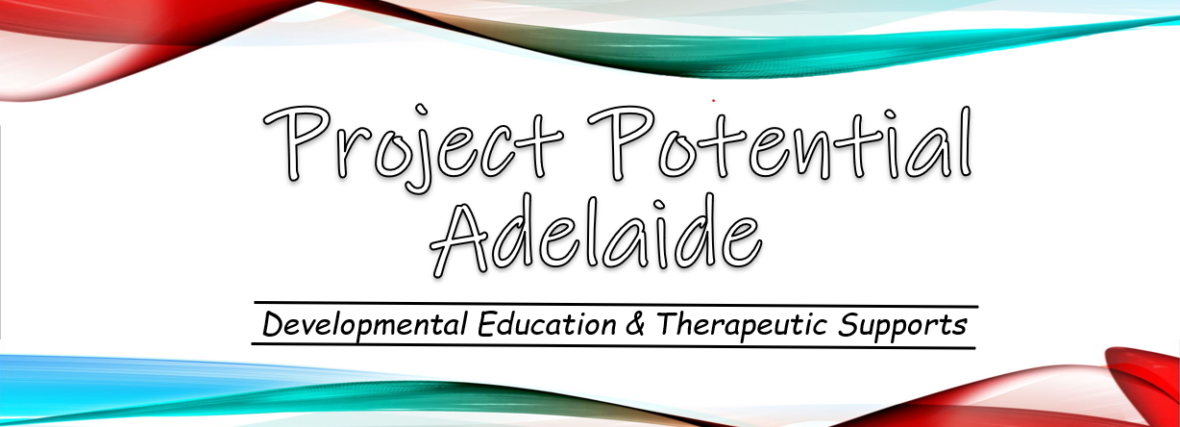
At Project Potential Adelaide, we use several key techniques to support our participants effectively. Our approach is centred on recognising and leveraging the unique strengths of each individual, using a variety of methods to foster empowerment and growth. These techniques are designed to create a supportive, personalised, and empowering environment for our participants, enhancing their abilities and quality of life. By focusing on strengths, proactive support, effective prompting, and comprehensive communication methods, we ensure that each individual receives the care and assistance they need to thrive.
Key Worker Model: We assist families navigating the NDIS landscape by liaising with relevant bodies to provide a tangible dialogue and practical role out of programmes under the guidance of allied health professionals. We work with the whole team around the participant (such as Speech Therapists, Occupational Therapists, Behaviour Practitioners, Teachers, Parents) to help deliver the therapeutic techniques prescribed by relevant professionals. We frequently host therapy sessions at our premises to gain an insight into appropriate techniques, while being able to promote generalisation at a high frequency within the community, with the aim of delivering high quality outcomes for participants.
Strengths-Based Approach: One of our foundational techniques, focusing on what individuals can do, rather than their limitations. By highlighting each person’s strengths and interests, we can tailor our support to foster confidence and motivation. For instance, if a participant has a keen interest in visual art, we would incorporate creative outlets into their programme to boost their confidence and engagement, such as creating reflective drawing at the end of the day instead of a written journal entry. This method empowers participants by involving them in setting and achieving personal goals, promoting a sense of self-determination and accomplishment. Our holistic assessments take into account each participant’s strengths, preferences, cultural background, and environmental factors, ensuring that our support is comprehensive and personalised.
Positive Behaviour Support Framework: In managing crises, we employ a PBS techniques framework which emphasises proactive planning and preventive measures to minimise restrictive interventions. We aim to create a calm and supportive environment, ensuring that participants are treated with dignity. For those who have individual positive behaviour support plans prescribed by a Behaviour Practitioner, we follow the guidance outlined to implement their strategies and are active in data collection. We practise the “One Voice, One Face” method, where only one support worker handles crises to reduce confusion and sensory overload. Additionally, we integrate Maslow’s Hierarchy of Needs into our crisis management, ensuring that basic needs such as safety and bodily needs are met first, through following a sensory diet. This helps participants regulate their emotions and behaviours more effectively, preventing escalations and promoting a sense of security.
Effective Prompting Techniques: Another vital part of our practice. These techniques guide participants through tasks with minimal assistance, promoting independence. We use various types of prompts, including modelling (demonstrating the desired behaviour or task), verbal prompts (spoken instructions), gestural prompts (using gestures to indicate the next action), and physical prompts (physically guiding the individual through the task). This graduated support helps participants gain confidence and competence in completing tasks independently.
Zones of Proximal Development & Scaffolding: We apply these concepts by identifying the range of tasks a participant can perform with guidance but not yet independently. Through scaffolding, we break tasks into smaller, manageable steps and gradually remove support as the participant gains independence. This method provides the necessary support and encouragement, enabling participants to achieve greater levels of autonomy.
Augmentative and Alternative Communication: For individuals with complex communication needs, we have available a wide range of available and accessible AAC, and our staff are also skilled in using SLP-prescribed AAC in a supportive and constructive way. AAC includes tools like communication boards and speech-generating devices, which supplement or replace speech. By defaulting to visual tasks and prompts, we reduce cognitive load, facilitating better understanding and communication for our participants. This approach ensures that everyone, regardless of their communication abilities, can express themselves and engage with others effectively.
